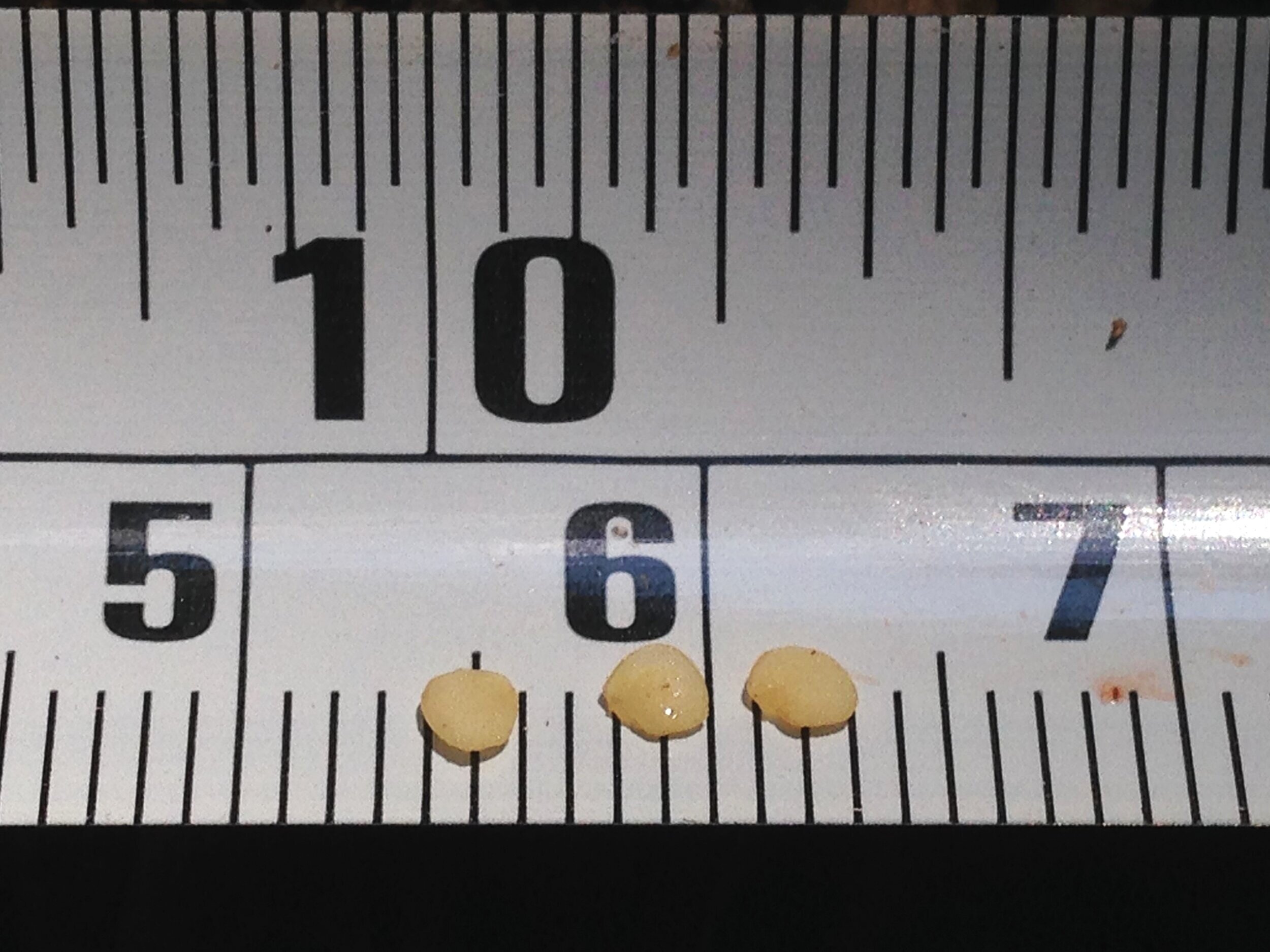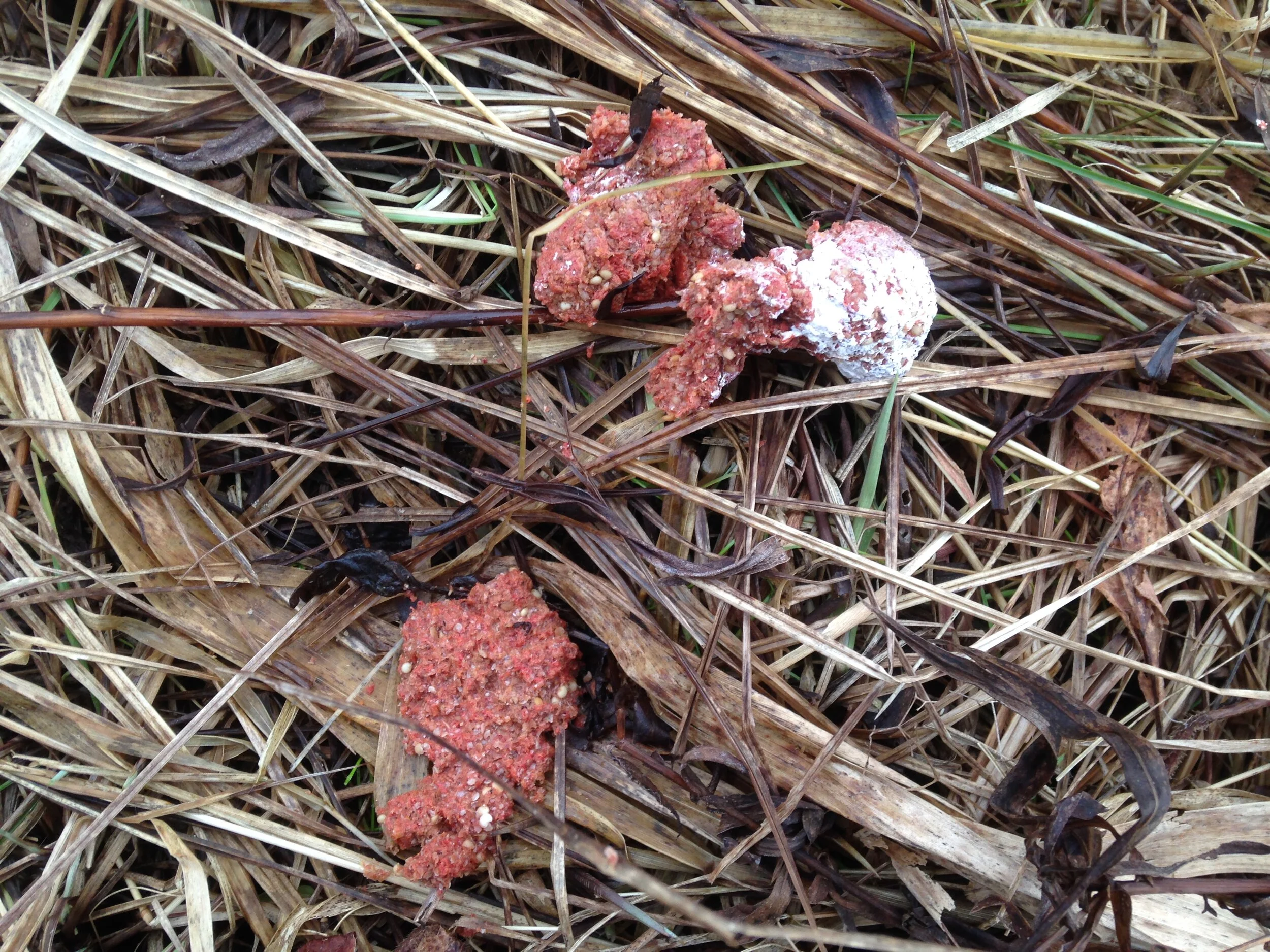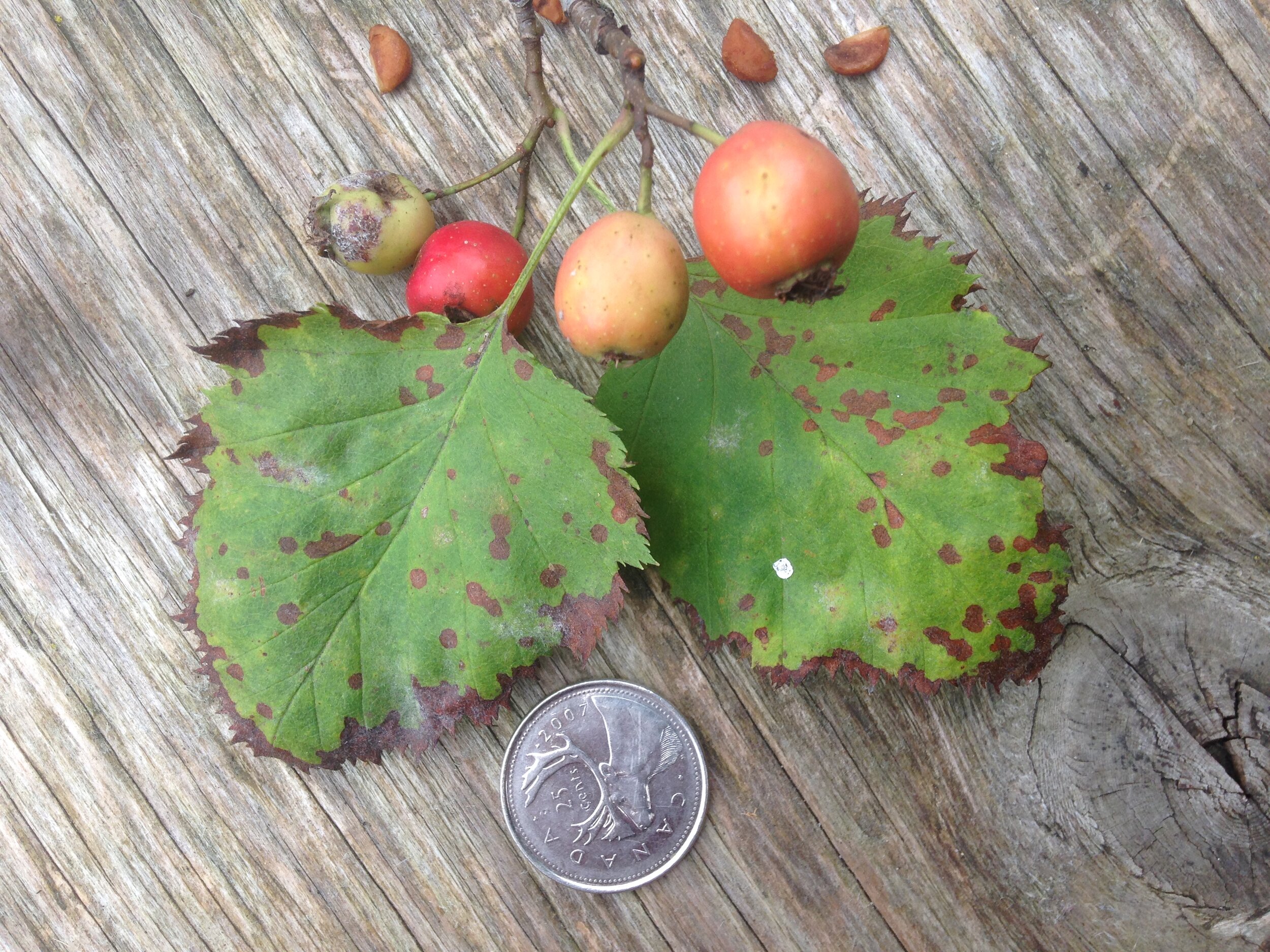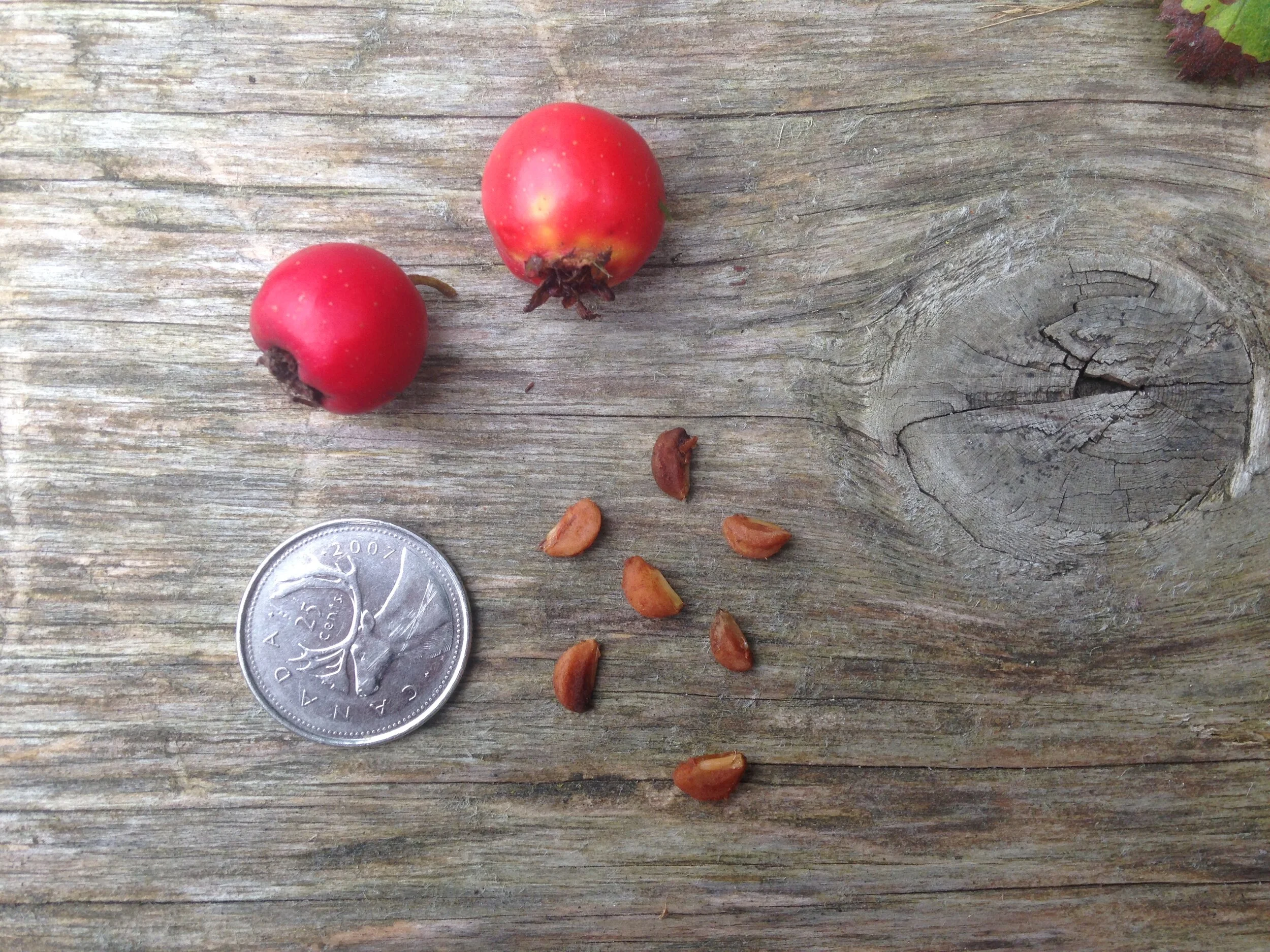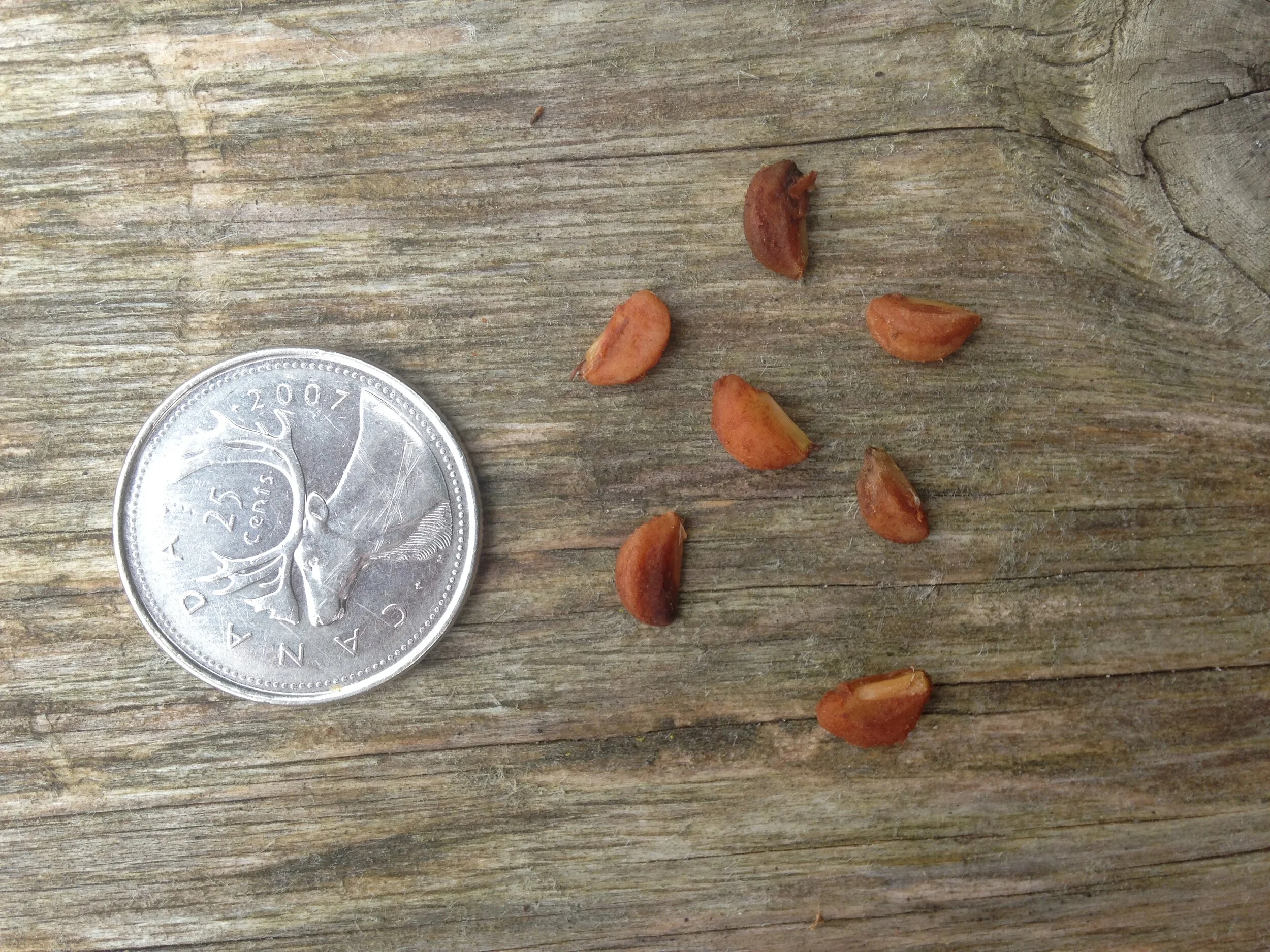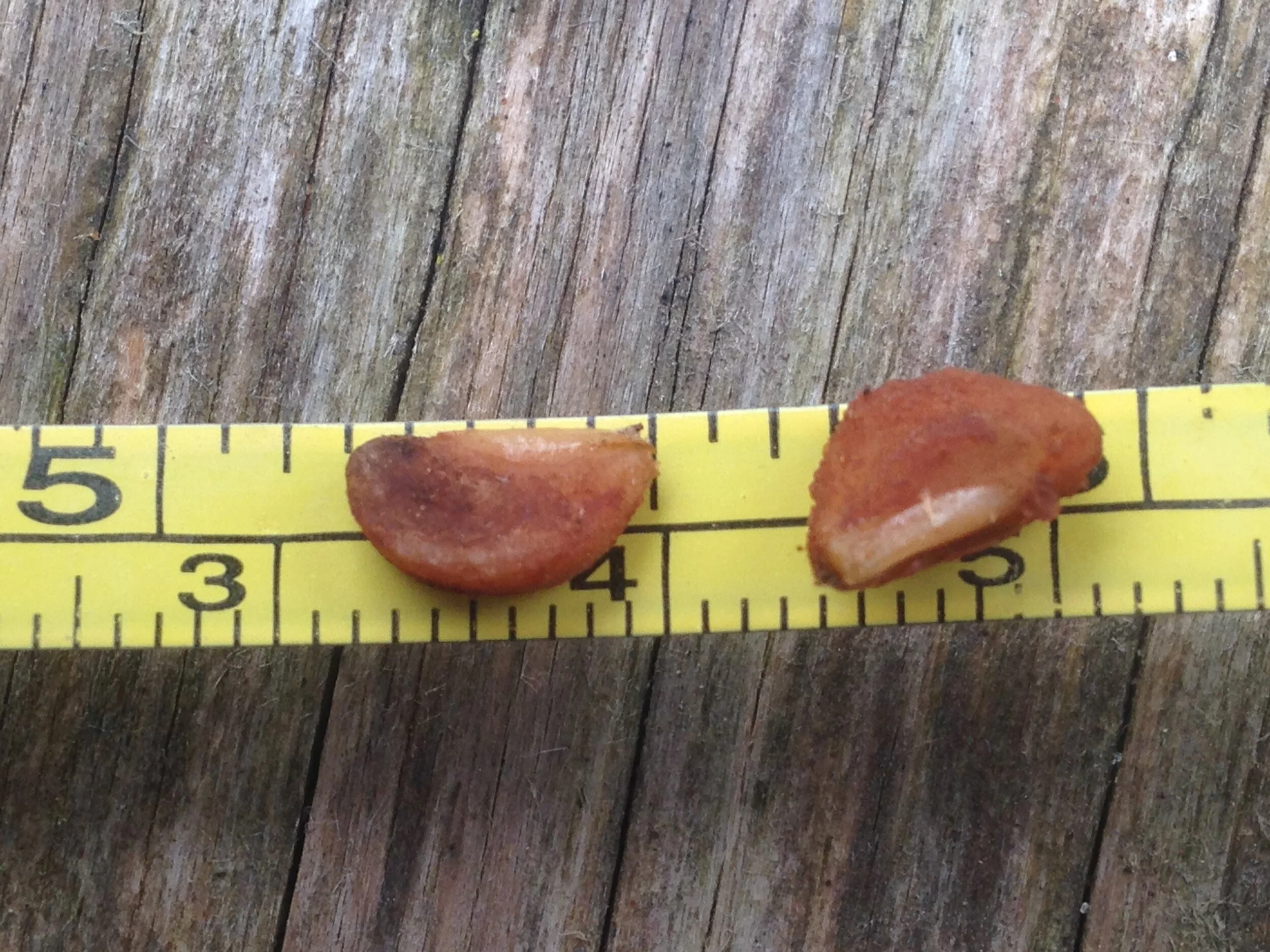Fruit and Seeds pt. 4
Part 4 in my series exploring fruit, seeds, and leaves. I got two new measuring tapes thanks to my friends (Matt and Steffanie). Thank you very much!
The common scale still remains a canadian quarter, which is 23.88 mm in diameter. I have even gone back and added photos of specific seeds found in scat to help better i.d. the seeds in situ, so check some of those out.
I am also running into problems around identifying some plants down to species, especially those that hybridize easily like the Hawthorns and Grapes. I hope to get better as I go. For now, this is still a blast.
Spikenard (Aralia racemosa)
Habitat of plant : Moist rich soil, deciduous and mixed forests with suitable shade.
When is fruit ripe : August-September
Size of seed : 2.5 - 3 mm long
General description of seed : Small pale rectangular with rounded edges. Flat enough to not roll very well. 10 seeds per fruit.
Notes : I have found Spikenard seeds contained within Marten (Martes americana) scat while tracking in Algonquin park.
Bittersweet Nightshade (Solanum dulcamara)
Habitat of plant : Woodlands, scrubby edges, riparian edges, mixed fields, urban alleys. Almost worth labelling S. dulcamara as a habitat generalist.
When is fruit ripe : Late August - October, but may stay on the vine through to December.
Size of seed : ~ 1.5 mm D
General description of seed : Small flat pale notched seed.
Notes : More than 10 seeds per fruit. Consumed by a few different bird species. I have included a photo of Wild Turkey (Meleagris gallopavo) scat composed of S. dulcamara fruit and seeds.
Hawthorn (Crataegus spp. - though I believe it to be Crataegus chrysocarpa)
Habitat of plant : Woodland edges, thickets and hedges, open forests, field edges, abandoned farmland, soils high in calcium.
When is fruit ripe : August-September, often remaining through winter.
Size of seed : 7 - 8 mm long.
General description of seed : Pale orange, medium sized quarter moon shaped. Compare with section of Orange.
Notes : 5 seeds per “pome”.
Virginia Creeper (Parthenocissus vitaceae)
Habitat of plant : Woods and thickets, riparian edges along banks, cliffs, talus slopes and open ground as beaches and fields.
When is fruit ripe : Late August - September.
Size of seed : ~ 4.5 mm.
General description of seed : Loosely triangular, with seam running down one side. Broad at one end, other coming to a point.
Notes : 4 seeds per fruit, fitted with each other as segments (compare with a “Terry’s Chocolate Orange”). Leaves usually come in 5 leaved bundles as opposed to six.
If you want to see all of the previous entries check out the links below:
Part 1 : Glossy Buckthorn (Rhamnus frangula), Tartarian Honeysuckle (Lonicera tartarica), Staghorn Sumac (Rhus typhina), Red Raspberry (Rubus idaeus var.)
Part 2 : Chokecherry (Prunus virginiana), Red-Osier Dogwood (Cornus sericea), Alternate-leaved Dogwood (Cornus alternafolia), Common Buckthorn (Rhamnus cathartica)
Part 3 : Grape (Vitis spp.), Swamp (Silky) Dogwood (Cornus obliqua), Starry False Solomon’s Seal (Maianthemum stellatum), Nannyberry (Vibernum lentago)
Part 4 : Spikenard (Aralia racemosa), Bittersweet Nightshade (Solanum dulcamara), Hawthorn (Crataegus spp.), Virginia Creeper (Parthenocissus vitaceae)
Part 5 : Black Currant (Ribes nigrum), Chokeberry (Aronia melanocarpa), Serviceberry (Amelanchier spp.), Elderberry (Sambucus canadensis)













